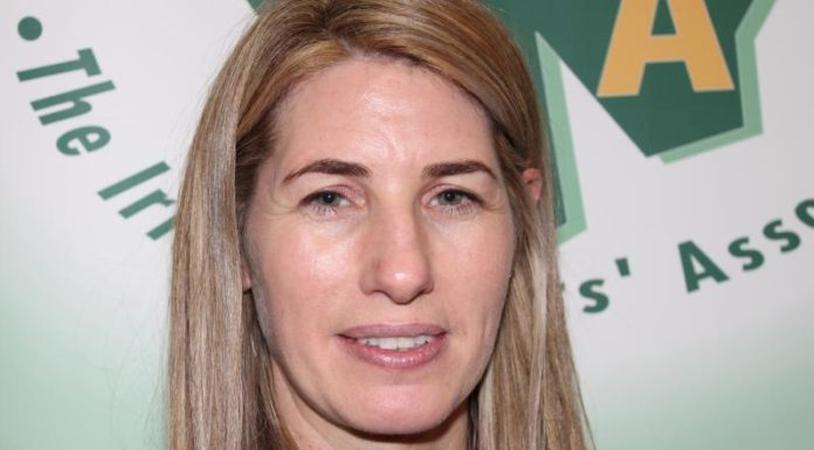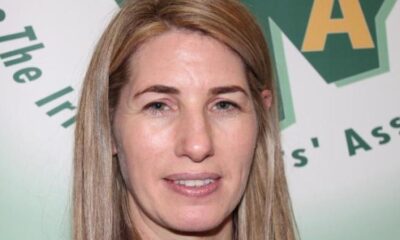Farming
Make a good start to the year

By Anthony O’Connorl
A GOOD start is half the work . . . yes indeed, how true this saying is with 2015 in progress. Start the coming year right by having a plan to make the most of grass. Grass is the cheapest source of feed.
It is three times cheaper than silage and five times cheaper than concentrates. Aim to exploit the advantage of grass to the full by a long grazing season (target is 220 days) and an early turnout of stock.
Aim for high weight gain from grass throughout the season. Keep enough leafy grass in front of stock right throughout the grazing season to get good animal performance.
Soil Fertility: On any farm, grass supply and grazing season length is dependent on location, weather, stocking rate and soil type, but most importantly, on the fertility status of the soil on the farm.
Soil fertility is hugely influenced by soil pH (lime level), along with phosphorous (P), potassium (K) or Potash and adequate nitrogen (N) levels present in soils/applied during the growing season.
The level and balance of NPK is hugely important. Both P and K are essential for plant growth, for the uptake and utilisation of nitrogen by grass plants. Lime is the cement in the mix of NPK that makes them available to promote plant growth.
Ensure you have a correct level and balance of P, K and lime on your farm. Ideally, for maximum grass growth, a soil needs to be at P index 3 for P and K and have a pH 6.3 or greater in grassland.
Soil fertility in Galway: Teagasc in Co. Galway have recently done an analysis of soil samples taken in November 2014 and the results are worrying, especially for a county that is mainly involved in grassland production.
60% of soil samples were low in phosphorus P. 62% of soil samples were low in potassium K and 75% were low in lime. However when Teagasc looked in-depth at the soil results above more than 90% of the soils were low in either P, K or lime.
Soil Testing: Taking soil samples is the first step in soil fertility management. It is also an effective way of tackling fertiliser costs. It provides you with vital information about your soils and has to be the foundation of any fertilizer plan.
A standard soil test will give the soil fertility status for pH, lime requirement, phosphorous (P) and otash (K). While it might appear expensive to carry out a soil test, it costs in the region of €1.25/ha./year, tt is value for money, with the test being valid for five years.
Soil testing at €25/sample is money well spent and when you get the P, K and lime correct you can produce €300 worth of additional grass/ha each year. Ideally, samples should be taken by a professional agriculturist or someone trained to take soil samples.
For more, read this week’s Connacht Tribune.
Connacht Tribune
Gardaí and IFA issue a joint appeal on summer road safety

GARDAÍ and the IFA have issued a joint appeal to all road users to take extra care as the silage season gets under way across the country.
Silage harvesting started in many parts of Galway last week – and over the coming month, the sight of tractors and trailers on rural roads will be getting far more frequent.
Inspector Conor Madden, who is in charge of Galway Roads Policing, told the Farming Tribune that a bit of extra care and common-sense from all road users would go a long way towards preventing serious collisions on roads this summer.
“One thing I would ask farmers and contractors to consider is to try and get more experienced drivers working for them.
“Tractors have got faster and bigger – and they are also towing heavy loads of silage – so care and experience are a great help in terms of accident prevention,” Inspector Madden told the Farming Tribune.
He said that tractor drivers should always be aware of traffic building up behind them and to pull in and let these vehicles pass, where it was safe to do so.
“By the same token, other road users should always exercise extra care; drive that bit slower; and ‘pull in’ that bit more, when meeting tractors and heavy machinery.
“We all want to see everyone enjoying a safe summer on our roads – that extra bit of care, and consideration for other roads users can make a huge difference,” said Conor Madden.
He also advised motorists and tractor drivers to be acutely aware of pedestrians and cyclists on the roads during the summer season when more people would be out walking and cycling on the roads.
The IFA has also joined in on the road safety appeal with Galway IFA Farm Family and Social Affairs Chair Teresa Roche asking all road users to exercise that extra bit of care and caution.
“We are renewing our annual appeal for motorists to be on the look out for tractors, trailers and other agricultural machinery exiting from fields and farmyards,” she said.
For more, read this week’s Connacht Tribune.
Connacht Tribune Digital Edition App
Download the Connacht Tribune Digital Edition App to access to Galway’s best-selling newspaper.
Click HERE to download it for iPhone and iPad from Apple’s App Store, or HERE to get the Android Version from Google Play.
Or purchase the Digital Edition for PC, Mac or Laptop from Pagesuite HERE.
Get the Connacht Tribune Live app
The Connacht Tribune Live app is the home of everything that is happening in Galway City and county. It’s completely FREE and features all the latest news, sport and information on what’s on in your area. Click HERE to download it for iPhone and iPad from Apple’s App Store, or HERE to get the Android Version from Google Play.
Connacht Tribune
Calls to ‘revisit’ exclusion of sheep sector from Brexit reserve fund

MINISTER for Agriculture, Charlie McConalogue, has been asked to review a decision taken over recent weeks to exclude the sheep farming sector from the Brexit Adjustment Reserve (BAR).
East Galway Independent TD, Seán Canney, has called on the Agriculture Minister and Government to ‘revisit’ the issue of sheep farmers and the BAR fund.
Galway IFA Chair, Stephen Canavan, also said that a mistake had been made in terms of excluding the sheep sector from the BAR funding.
“I think that there is no doubt whatsoever that Brexit had a major impact in terms of New Zealand lamb exports flooding the UK market.
“The knock-on affect of that on Irish sheep farmers was a serious fall-back on lamb and hogget prices through the early months of this year.
“There are now serious concerns that the farmers who buy in store lambs through the early autumn period will just pull out of this market after getting such a scalding over the past six months or so,” said Stephen Canavan.
According to Deputy Seán Canney, all of the Regional Group of TDs are backing the move to get the Government to have another look at the use of the BAR fund for the sheep sector.
“The evidence that sheep farming was affected by Brexit is strong and the decision not to support people in this sector needs to be reversed immediately.
“Brexit negotiations began in June 2016 and caused turmoil in the sheep trade as it weakened the currency making UK lamb far more competitive.
“The notion or threat of ‘a no deal ‘ in Brexit caused the price of sheep to fluctuate repeatedly in the trade and resulted in lambs selling for an estimated €30-€50 lower per head each year during the entire Brexit process,” said Deputy Canney.
Connacht Tribune
Dairy sector driving land market

WITH the exception of Leitrim, Galway was marginally the cheapest county in the west and north-west to buy non-residential farmland during the course of 2022, according to the latest national survey of prices.
The survey showed that the average price of an acre of ‘good land’ in Galway last year, for holdings under 50-acres, was €9,500 – the dearest was Donegal at €12,143 while the cheapest was Leitrim at €6,140 an acre.
Jointly researched by Society of Chartered Surveyors Ireland (SCCI) and Teagasc, the survey also indicated that only 0.5% of land in Ireland goes up for sale each year, a major factor in terms of demand for leased land.
‘Good land’ in Mayo [under 50-acres] averaged out at €10,092; the figure for Roscommon was €9,938; with Sligo coming in at €9,550.
When it came to a comparison of poorer quality land in Connacht [under 50-acres], Mayo was the cheapest at €2,886 followed by Leitrim on €3,300 while Galway topped ‘poor land price league’ at €5,375 per acre.
Auctioneer Martin O’Connor of DNG O’Connor, Oughterard, said that the market was being driven by dairy farmers ‘who are continually ranked throughout the survey as the most likely purchasers of land across the country’.
He said that changes in the European Nitrates Directive in relation to improving water quality meant that many dairy farmers needed more land to comply with this directive.
“In order to maintain current levels of milk production – and to comply with the directive – many dairy farms will need to either increase their land area or reduce milk production.
For more, read this week’s Connacht Tribune.
Connacht Tribune Digital Edition App
Download the Connacht Tribune Digital Edition App to access to Galway’s best-selling newspaper.
Click HERE to download it for iPhone and iPad from Apple’s App Store, or HERE to get the Android Version from Google Play.
Or purchase the Digital Edition for PC, Mac or Laptop from Pagesuite HERE.
Get the Connacht Tribune Live app
The Connacht Tribune Live app is the home of everything that is happening in Galway City and county. It’s completely FREE and features all the latest news, sport and information on what’s on in your area. Click HERE to download it for iPhone and iPad from Apple’s App Store, or HERE to get the Android Version from Google Play.












